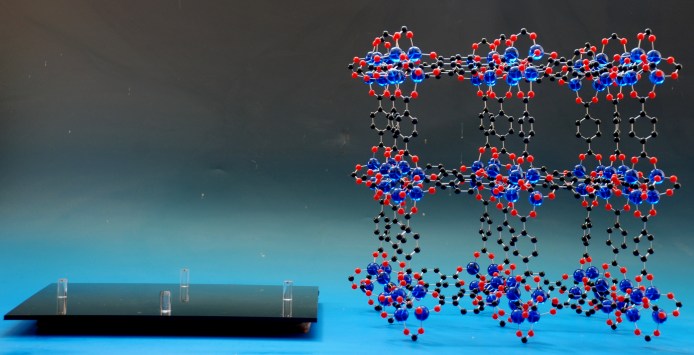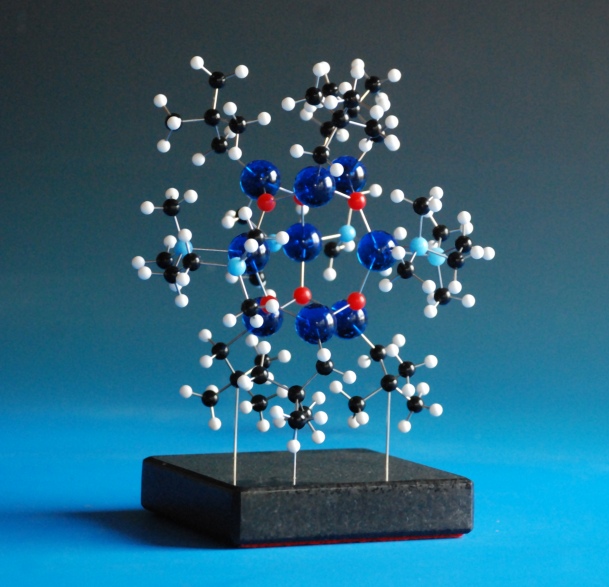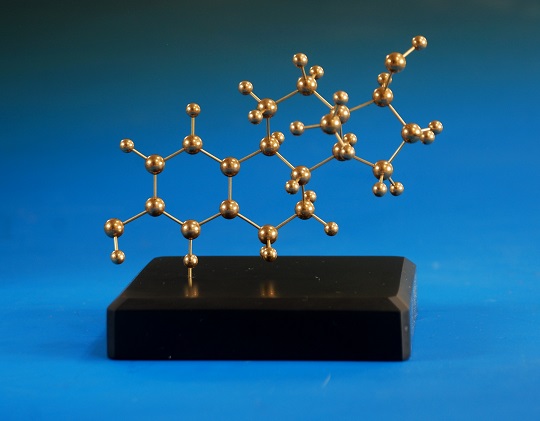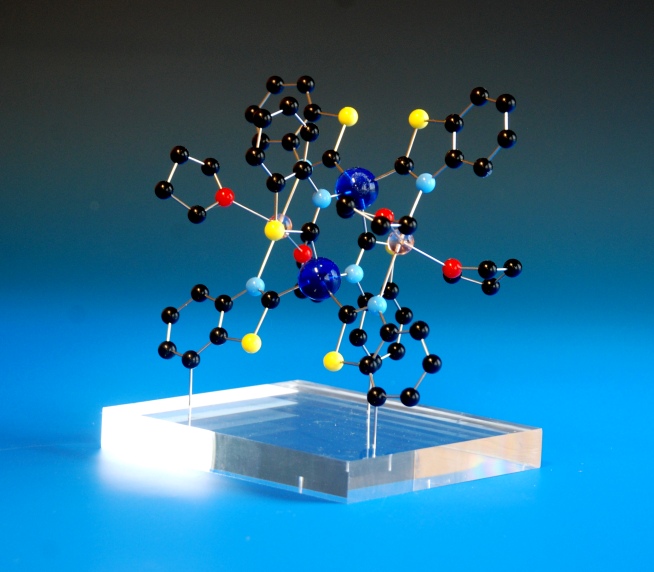Molecular model on a clear acrylic base
Crystal structure model on a cherrywood base
Molecular model on a black acrylic base
Molecular model on a clear acrylic base
Crystal structure model on a cherrywood base
Molecular model on a black acrylic base
Our molecular models work well as stand-alone scientific aids or as decorative features. When they are attached to a high quality base, though, they are they are transformed into works of art that command attention. In fact, a base can completely change the character of a model - even the type of base changes the way that it is viewed. For example an acrylic base provides a clean-lined modern impression and wood is much more classic and almost rustic. In our opinion, though, there is nothing that can beat the quality and elegance of granite if you want a deluxe object to present - the weight and beauty of the stone is simply unmatched.
If you are using your model to give to someone as a presentation or an award, or you plan to use it as a desk displays, we strongly recommend you consider a base for your model. Even a cheap acrylic base, whcih adds only a small amount to the cost of your model, makes it look so much more expensive.
Molecular models are normally fixed to the base, and you have a wide selection to choose from. Our commonest options include, but are not limited to:
Oak Cherry Yew Beech Walnut
Slate Marble Granite
Painted composite
Any colour, including metallic colours
Crystal strucure models and molecular models very often serve a dual purpose - they send most of their time sitting decoratively in an office or laboratory. At other times, they may be required at other times for pedagogical purposes. While our bases improve the appearance of a model, fixing them to a base can make them useless for teaching or illustration. Often, when teaching, it is useful to be able to rotate the crystal so that you can see into structure from underneath, or from another angle. Having the model fixed to a base precludes that.
There is a solution, though. If we incorporate magnets into supports in the base, and include corresponding magnets in the atoms in the model, the crystal structure model ca be held very firmly in place on the base. With strong enough magnets, most models can be held upside down, quite literally, without any danger of them falling. When you need to use the model for teaching, though, the magnetic bonds are readily overcome, and allow the model to be lifted from the base when needed for showing to visitors or students.

Crystal structure model of a MOF framework with its magnetic base

Molecular model on a granite base

Brass molecular model of estradiol on a slate base

Molecular model on a transparent acrylic base